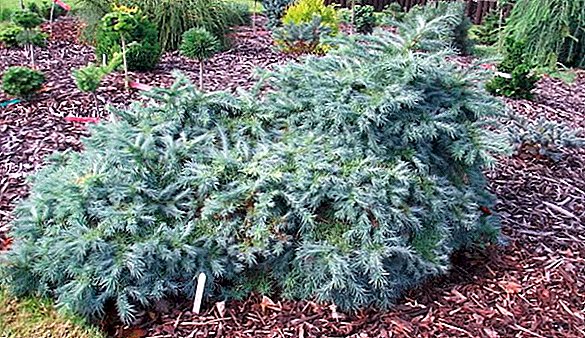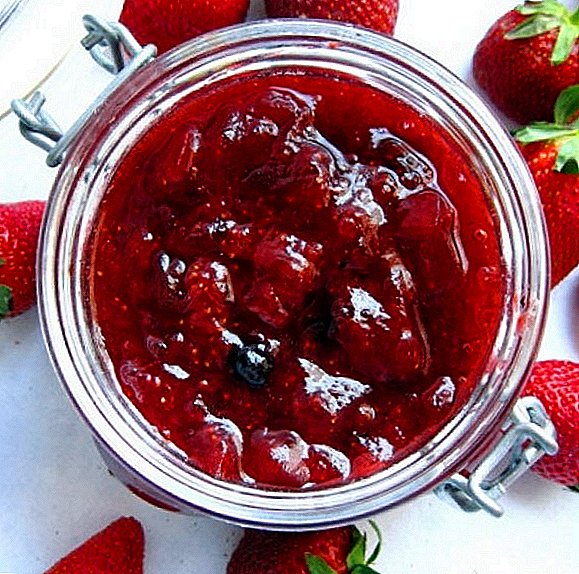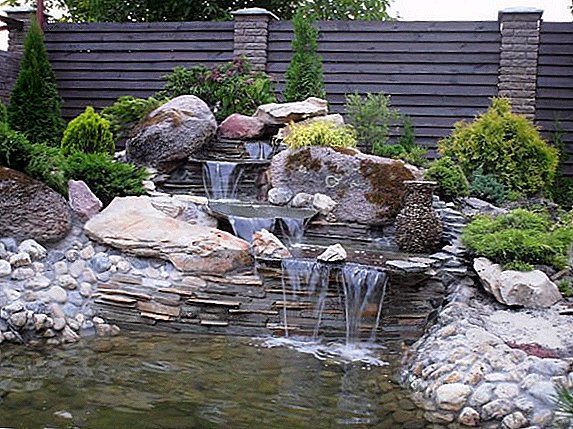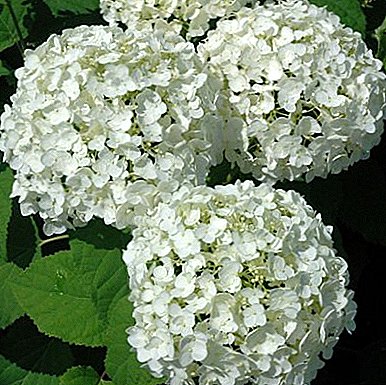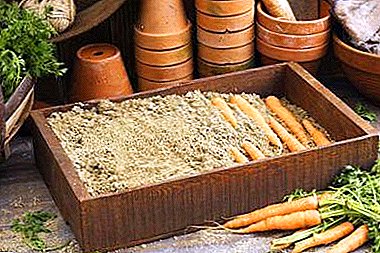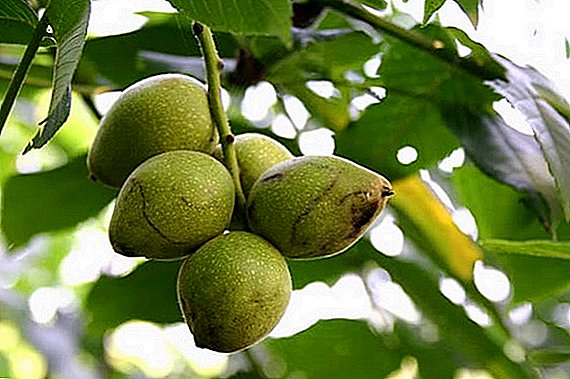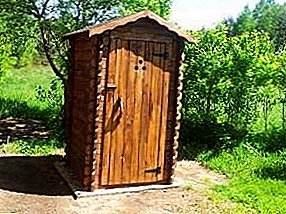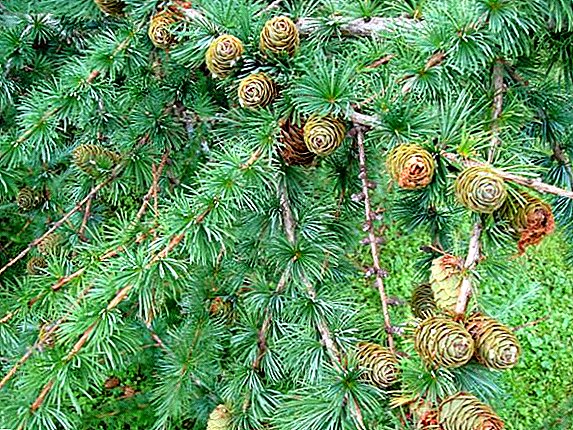 If you want to decorate your garden with something unusual, pay attention to the larch. This conifer tree is already unique only in that it belongs to the deciduous group. In early spring, juicy green needles bloom on it, and by autumn the fluffy crown is filled with lemon, yellow and orange shades, gradually dropping the foliage. In addition, the breeders brought a lot of weeping and dwarf forms that will not leave anyone indifferent. We will tell all about larch, which varieties and species are popular and which ones are more suitable for the conditions of your garden.
If you want to decorate your garden with something unusual, pay attention to the larch. This conifer tree is already unique only in that it belongs to the deciduous group. In early spring, juicy green needles bloom on it, and by autumn the fluffy crown is filled with lemon, yellow and orange shades, gradually dropping the foliage. In addition, the breeders brought a lot of weeping and dwarf forms that will not leave anyone indifferent. We will tell all about larch, which varieties and species are popular and which ones are more suitable for the conditions of your garden.
Important! Most larch seeds are empty, which explains their poor germination. Reproduction occurs mainly by cuttings.
Larch: a brief description
Larch (Lárix) is the most common tree representative of the Pine family. In the natural environment, these trees grow to a height of 50 m. They have a slender trunk with a thick brown bark covered with deep furrows. In mature specimens, it can grow in diameter up to 1 m.
Crohn's larch openwork. The branches initially form a cone-shaped shape, and as the tree ages grow, they turn into an oval with a flattened top. On windy areas possible baldness of the north side. The needles are not prickly, bright green, slightly flattened. The length of the needles is up to 4 cm. On long branches, they grow singly or spiral-shaped, and on short branches they are collected in bunches.

In the phase of fruiting culture enters the 10-15th year. Larch size and shape of cones depend on their sex. Male fruits with yellow scales, oval, up to 10 mm long, and female reddish, sometimes scarlet, smaller sizes. Seeds winged. A tree with bare branches winters, adapts well to any frost, and needles reappear in the spring.
Botanists distinguish about 14 species of larch. Almost all of them are cultivated in the Northern Hemisphere. In Ukraine, the arrays of this conifer can be seen in the western part of the Carpathians. The culture adapts well to salt marshes, prefers solar patches, is sensitive to strong winds.
Larch is often found in orchards, mainly European, Japanese, Siberian, less often Dahurian. Ornamental specimens need mulching pristvolnyh circles, loosening the soil and systematic spring fertilization with mineral complex fertilizers. In order to combat parasites and for the prevention of wood is treated with copper sulfate.
Did you know? Globally, larch is valued for high-quality wood, which on the Brinell scale scores 109 points, slightly behind oak (110).
The best varieties of Siberian larch
 Siberian larch (Larix sibirica) is characterized by a smooth, powerful trunk, up to 45 m high, with thick light brown furrow bark, wide light green needles with smoky bloom and branches growing at right angles and large lumpy cones. On young trees, the fruit scales are painted in a rich burgundy color. The size and shape of the Siberian larch cones resemble elongated nuts. The tree is common in Siberia. Differs wind and drought tolerance.
Siberian larch (Larix sibirica) is characterized by a smooth, powerful trunk, up to 45 m high, with thick light brown furrow bark, wide light green needles with smoky bloom and branches growing at right angles and large lumpy cones. On young trees, the fruit scales are painted in a rich burgundy color. The size and shape of the Siberian larch cones resemble elongated nuts. The tree is common in Siberia. Differs wind and drought tolerance.
Decorative forms are:
- pyramid (with a crown in the shape of a pyramid);
- compact (with a dense crown and dense branches adjacent to each other);
- weeping (with drooping branches);
- dull (the crown form of this larch is cylindrical, without a pointed tip).
European larch: what variety to choose for planting
European larch (Larix decidua) is common in the western and northern regions of Europe. Prone to intensive development. In its natural environment it reaches up to 50 m, and in our latitudes it reaches only half of that length, has a thick conical crown and a powerful trunk. The needles are bright green. Cones are reddish. Flowering begins in May. The tree adapts on any soil, including limestone and loam, but does not tolerate nearby groundwater. All species of larch prefer subacid substrates.
Many people confuse European and Siberian larch, not understanding what their main differences are. In fact, this breed is characterized by weeping shoots extending from skeletal branches. Young purple or scarlet fruit in the form of a small rose. In addition, the crown can be decorated for years with cones that have not developed seeds. And the Siberian larch before other species loses foliage and, accordingly, decorative. By these signs it is easy to recognize which species a particular larch tree belongs to.
Did you know? Unlike pine and spruce, larch sheds needles, has a crown with a conical frame, flattened with soft needles and small brown cones of various sizes.Garden varieties of European larch are represented by varieties:
- Kornik - the tree grows up to 1.5 m and in breadth to 1.2 m, has a spherical crown. Short branches are covered with numerous buds, needles are green, up to 3 cm long. Prefers moist fresh soils. Larch Kornik is also cultivated in the stem form.

- Repens is a fast growing tree with a trunk up to 1.5 m high and a crown diameter up to 80 cm. It is cultivated in the form of a stem. Creeping shoots, very flexible and branched. Recommended for small gardens, rock gardens and for container growing.
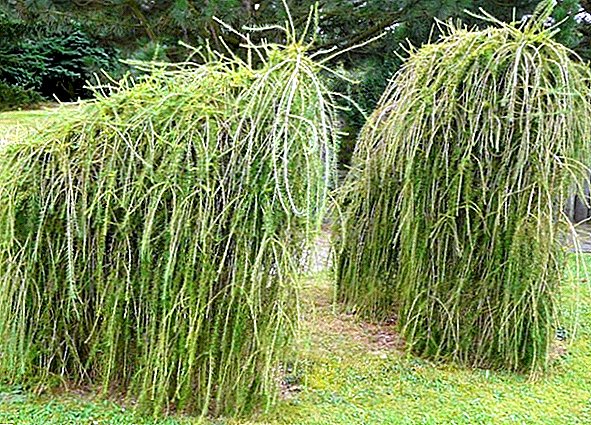
- Kellermannii is a dwarf bush-like form with thick flexible shoots and thick needles.
Japanese larch (Kempfer): description and photo of varieties for the garden
Japanese larch (Lárix kaémpferi) on the native island of Honshu grows to a height of 35 meters. The crown is wide, pyramidal. The branches are gray, thick, reddish bark. The needles are bluish-green, up to 5 cm long. The fruits are round, firmly supported on the sprouts, they can hang for about 3 years. Prefers sunny areas on loamy and clay soils. It is distinguished from other species by its resistance to shade and urban conditions, its rapid development and extreme decorative effect. In addition, the foliage of this breed falls off later than all other relatives.
Did you know? The oldest larch is 800 years old.Gardeners often choose the following varieties of Japanese larch for planting:
- Blue Dwarf is a dwarf tree with a dense spherical crown up to 2 m high and up to 80 cm wide. It develops slowly. More often cultivated on a shtambe. The needles of a bluish tint grow very thick. The tree is well acclimatized on fertile moist soils.
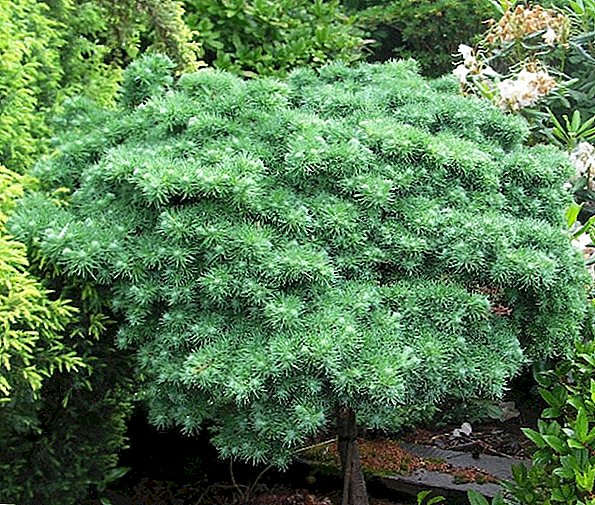
- Diana - different spiral branches and delicate smoky needles. Feels comfortable on drained sandy soils, does not like droughts and stagnant water.
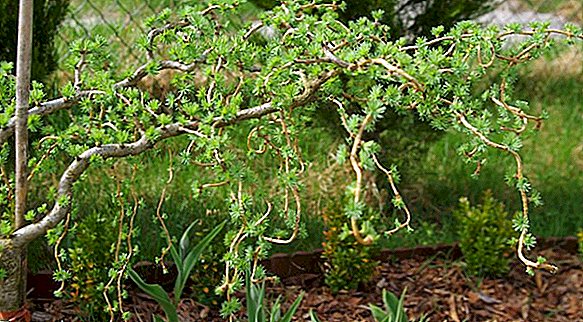
- Pendula - weeping larch. It is a tree up to 6 m high and 1.5 m wide. Shoots sagging. In mature plants, branches hang down like a train, and look very impressive in single plantings and in composite ones.

- Nana is a stunted tree with bright blue needles.
